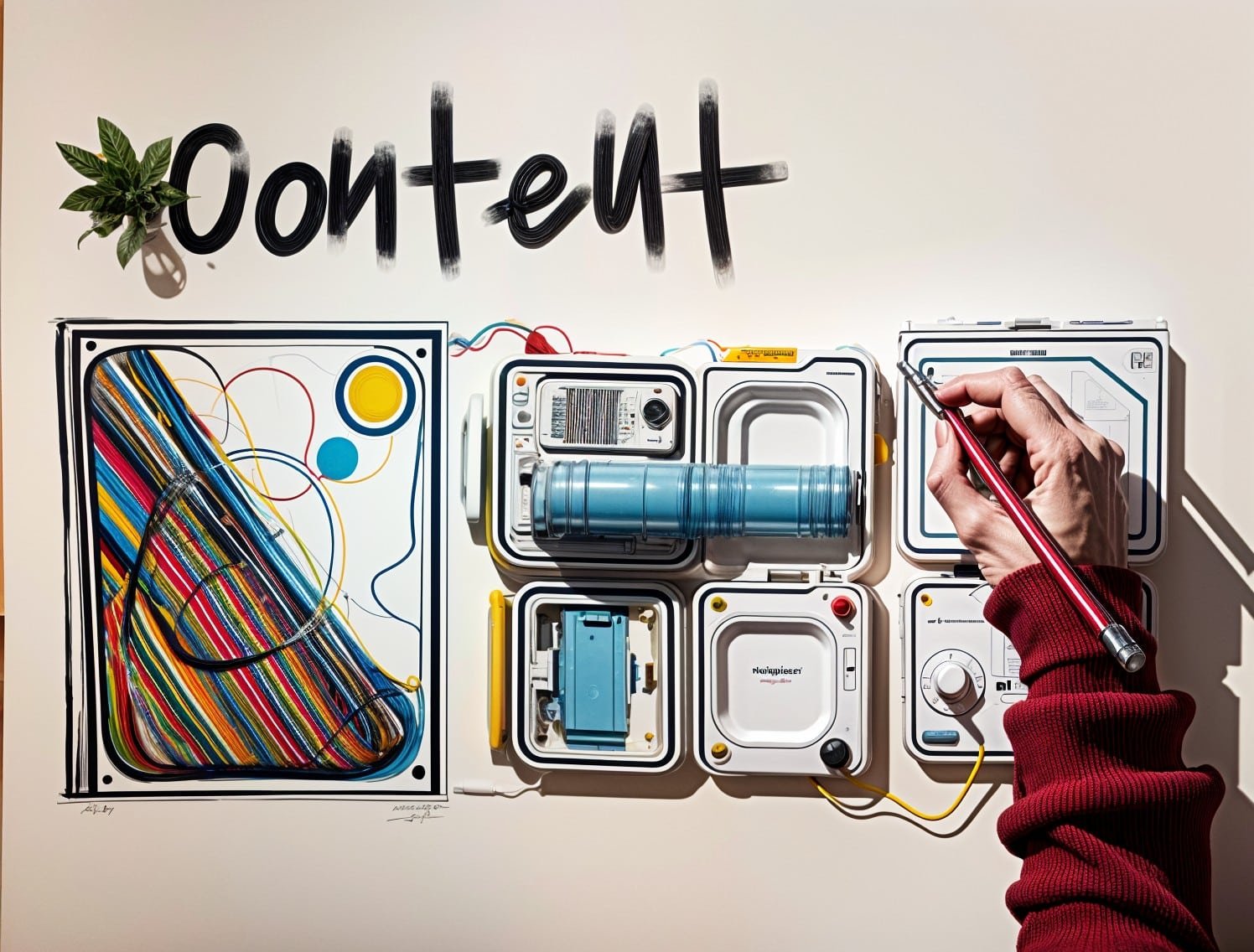

Artificial intelligence (AI) is revolutionizing the creative industry, making it easier than ever for content creators to enhance their workflow, save time, and unleash new levels of creativity. From writing assistants and video editing software to generative art platforms, AI tools are becoming indispensable for creators in every medium.
If you’re new to AI, this guide will introduce you to some of the most useful AI tools available and provide practical tips on how to incorporate them into your creative process. Whether you’re a writer, video producer, designer, or artist, AI can help you work smarter and faster while enhancing your content creation.
1. AI-Powered Writing Assistants
For content creators focused on writing, AI-powered writing assistants are becoming must-have tools. These platforms help with everything from generating ideas to improving grammar and style, allowing you to focus on crafting engaging narratives.
Key Tools:
- GPT-Based Assistants: Tools like ChatGPT, Jasper, and Writesonic leverage the power of large language models to help generate blog posts, articles, product descriptions, and even creative stories. These tools can be a huge time-saver for brainstorming ideas, drafting initial copies, or overcoming writer’s block.
- Grammarly: A great tool for checking grammar, spelling, and tone. Grammarly’s AI helps you refine your writing and ensures it’s polished and professional.
- Copy.ai: This AI writing tool can generate marketing copy, social media posts, and other written content quickly. Its AI-based system is designed for speed and efficiency, making it ideal for marketing professionals and content creators.
Tips for Beginners:
- Start Small: Use AI for brainstorming and idea generation before diving into longer-form content. AI can provide you with fresh perspectives or prompts that spark your creativity.
- Review and Edit: AI-generated content may not always be perfect. Make sure to review and refine the text to match your tone and style, ensuring that it aligns with your brand’s voice.
2. AI-Driven Video Editing Software
Editing video content can be time-consuming, but AI-driven video editing tools can speed up the process, automatically trimming clips, adding transitions, or applying filters based on the context of your footage.
Key Tools:
- Magisto: An AI-powered video editing platform that helps turn raw video footage into polished, shareable videos. Magisto analyzes your clips and automatically applies transitions, music, and effects.
- Adobe Premiere Pro with Sensei AI: Adobe’s flagship video editor integrates AI features like auto-reframing, where the AI detects subjects in the video and adjusts framing for different platforms (16:9, square, vertical).
- Runway ML: This is an AI video creation and editing tool with powerful features like automatic background removal, style transfer, and even text-to-video capabilities, making it a powerful choice for creators who want more control over the AI-driven effects.
Tips for Beginners:
- Automate Routine Tasks: Let AI handle tedious tasks like trimming, color correction, or audio syncing. This frees up your time to focus on creative aspects like storytelling, visual design, or pacing.
- Experiment with Effects: AI-driven tools often come with powerful effects that can enhance the overall quality of your videos. Use these tools to experiment with different looks and find your visual style.
3. Generative Art Platforms
AI is not only changing the way we write and edit but also transforming how visual content is created. Generative art platforms allow artists and designers to create stunning visuals, artwork, and design elements with the help of AI algorithms.
Key Tools:
- DALL·E: Developed by OpenAI, DALL·E is an AI model that generates images from text prompts. You can input a simple description, and the AI will create visuals based on that prompt, making it a powerful tool for generating unique images for blogs, ads, and social media.
- Artbreeder: This AI tool allows users to generate new artworks or enhance existing ones by blending different visual styles or genetic traits of the images. You can easily create surreal art, portraits, and landscapes with little effort.
- Deep Dream Generator: This tool uses neural networks to transform ordinary images into dream-like, abstract visuals. It’s a fantastic way to add a unique, artistic touch to your content or social media posts.
Tips for Beginners:
- Start with Simple Prompts: For tools like DALL·E, begin with simple descriptions to get a feel for how the AI interprets prompts. As you get more comfortable, experiment with more detailed or creative inputs.
- Incorporate AI Art into Branding: Use generative art to create unique visuals for your brand. AI-generated images can be used for logos, cover art, or background designs that stand out from the crowd.
4. AI for Social Media Management
Managing social media is a big part of content creation, and AI can assist by automating many tasks such as scheduling posts, analyzing engagement data, and even suggesting optimal times to post.
Key Tools:
- Hootsuite: An AI-powered platform that helps creators schedule social media posts across multiple channels. It also provides AI-driven insights to help you understand the best times to post and how to engage with your audience effectively.
- Lately.ai: This AI tool analyzes your existing content (like blogs or videos) and generates social media posts based on the material, allowing you to repurpose long-form content into bite-sized social snippets.
- Canva with Magic Resize: Canva offers AI-powered design features like the Magic Resize tool, which adjusts your designs to fit different social media platforms with one click.
Tips for Beginners:
- Automate Scheduling: Let AI tools handle scheduling and posting so you can focus on creating. Set up a content calendar and let tools like Hootsuite or Buffer take care of the rest.
- Repurpose Existing Content: Use tools like Lately.ai to convert blogs or videos into engaging social media posts. This allows you to get more mileage out of your long-form content.
5. AI Tools for SEO and Content Optimization
AI can also help content creators improve their online visibility by optimizing content for search engines. AI-driven SEO tools analyze keywords, competitor content, and search trends to ensure that your content ranks higher and reaches a broader audience.
Key Tools:
- Surfer SEO: This tool uses AI to analyze top-ranking pages for any keyword, giving you insights into what’s needed to rank higher. It suggests changes to your content based on keyword density, structure, and readability.
- Frase: An AI-driven content optimization platform that helps you create well-optimized content based on top-performing competitor analysis. It also offers AI-generated content outlines and briefs.
- Yoast SEO (WordPress): This popular WordPress plugin uses AI to optimize your content as you write it, giving you real-time feedback on readability, keyword usage, and more.
Tips for Beginners:
- Follow AI Recommendations: Use AI suggestions to improve your SEO and optimize your content structure. Tools like Surfer SEO or Yoast SEO can guide you step-by-step in improving keyword usage and readability.
- Monitor Trends: Stay updated with AI tools that analyze search trends, helping you create content that aligns with what your audience is actively searching for.
Conclusion: Embracing AI in Your Creative Workflow
AI tools for content creation are more accessible than ever, making it easier for beginners to enhance their creative processes. Whether you’re looking to generate ideas, edit videos faster, create stunning visuals, or improve your SEO, AI can streamline tasks and open new doors for creativity.
Start by integrating one or two AI tools into your workflow, and as you become more comfortable, experiment with different options to see which ones best fit your creative needs. The possibilities with AI are endless, and by embracing these technologies, you can elevate your content and stand out in an increasingly competitive media landscape.
Are you ready to take your creativity to the next level with AI? Let’s explore what’s possible!
